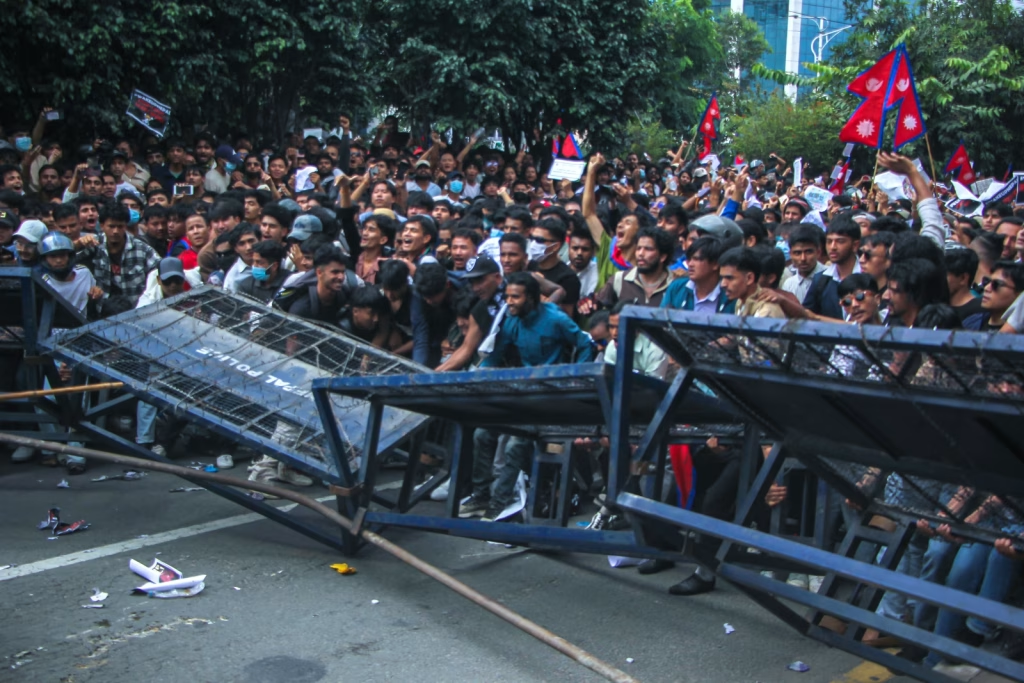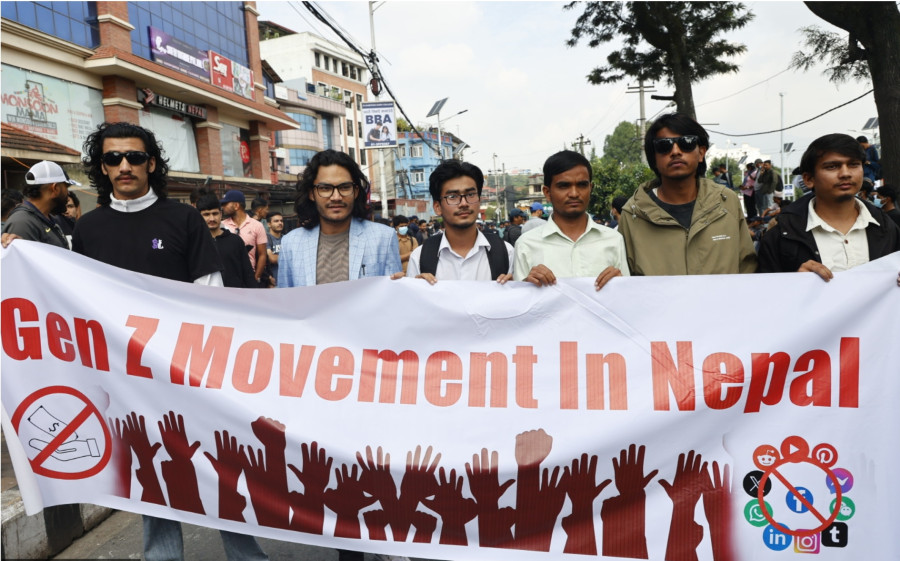In early September 2025, Nepal witnessed a wave of youth-led protests that forever changed the nation’s political and social landscape. What began as frustration over the government’s ban on social media quickly spiraled into the most significant uprising in decades, a movement led predominantly by Generation Z. Within just 48 hours, the country’s power structures crumbled, the Home Minister resigned, top leaders’ residences were set ablaze, and symbols of the state, from Singha Durbar to the Parliament House were engulfed in flames.
This was not just a protest. It was a generational earthquake.

Day 1: The Spark – 8 September
Tens of thousands of young citizens gathered in Kathmandu, especially around Maitighar Mandala and New Baneshwor, demanding accountability, an end to corruption, and the immediate reversal of the social media ban. At first, it was a peaceful rally, but things escalated when confrontations broke out with security forces.
By evening, the movement reached a breaking point:
- The government, under immense pressure, lifted the ban on social media platforms.
- Home Minister Ramesh Lekhak resigned, marking the first major political casualty of the protests.
- However, curfews were imposed across Kathmandu, Birgunj, Bhairahawa, Pokhara, Itahari, and more, signaling that the state feared what was to come.
Despite the crackdown, the youth did not retreat. Instead, their calls grew louder: dissolution of parliament, transparency, and accountability.
Day 2: The Wildfire – 9 September
If September 8 was the spark, September 9 was the wildfire. Nepal plunged into chaos.
Protesters stormed and set fire to Singha Durbar, the Supreme Court, Sital Niwas, Baluwatar, and the Federal Parliament building. In an unprecedented show of defiance, the homes of top political leaders including former prime ministers Sher Bahadur Deuba, Jhala Nath Khanal, Prachanda, and Bidya Devi Bhandari were attacked and set ablaze.
Across provinces, district courts, parliament buildings, party offices, and even police stations were torched. Kantipur Media House and several luxury hotels were not spared. In Rupandehi, Chitwan, Biratnagar, and beyond, local politicians’ houses met the same fate.
The anger was raw. The destruction, unmatched.
By nightfall:
- Prime Minister K. P. Sharma Oli resigned and fled, unable to withstand the fury.
- The Nepali Army stepped in, hinting at taking charge of national stability.
- Over 13,500 prisoners escaped after jails were stormed and burned.
What began as a protest for digital freedom had transformed into a rebellion against an entire political system.

Who Was Really Behind the Violence?
While the protests were undeniably Gen Z–driven, an uncomfortable question lingers:
👉 Did external political forces hijack the peaceful rallies?
👉 Was the level of organized arson and targeted destruction spontaneous, or did a third-party group fuel the chaos to weaken Nepal’s fragile democracy?
👉 How did protesters suddenly gain access to weapons and strategies that looked far too coordinated for a leaderless movement?
Many organizers, including representatives from civil society, have claimed that “outside cadres” and “unknown infiltrators” escalated the violence. If true, this raises even more pressing questions about who truly benefited from the destruction.
The Aftermath
By September 12, Sushila Karki former Supreme Court Chief Justice — was appointed as Nepal’s first-ever female interim Prime Minister, tasked with running elections and healing a wounded nation.
But the cost was devastating:
- 72 lives lost
- Over 2,100 injured
- Government and public infrastructure worth billions destroyed
- The trust between citizens and the state fractured like never before
And yet, this movement was not just about fire and fury. It was about a generation making a statement: Nepal’s youth will no longer be silenced.

Final Thoughts
September 8 and 9 were not just days of protest. They were days when a nation’s youth demanded ownership of their future. Days when palaces of power trembled and history was rewritten in fire and blood.
Whether remembered as a revolution of hope or a rebellion hijacked by darker forces, one truth remains:
Nepal will never be the same again.
